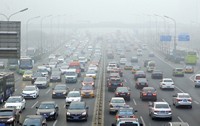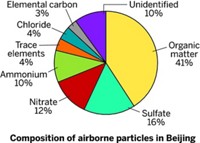Advertisement
Grab your lab coat. Let's get started
Welcome!
Welcome!
Create an account below to get 6 C&EN articles per month, receive newsletters and more - all free.
It seems this is your first time logging in online. Please enter the following information to continue.
As an ACS member you automatically get access to this site. All we need is few more details to create your reading experience.
Not you? Sign in with a different account.
Not you? Sign in with a different account.
ERROR 1
ERROR 1
ERROR 2
ERROR 2
ERROR 2
ERROR 2
ERROR 2
Password and Confirm password must match.
If you have an ACS member number, please enter it here so we can link this account to your membership. (optional)
ERROR 2
ACS values your privacy. By submitting your information, you are gaining access to C&EN and subscribing to our weekly newsletter. We use the information you provide to make your reading experience better, and we will never sell your data to third party members.
Environment
Kerosene Lamps Pack Big Climate Punch
Particulate Emissions: Overlooked lamps may produce as much black carbon as shipping industry does
by Naomi Lubick
November 28, 2012
CORRECTIONS: This story was updated on Dec. 4, 2012, to provide the correct unit of measure for the black carbon emissions: gigagrams, not gigatons. The story was updated on Nov. 30, 2012, to explain that it was the study authors’ idea that kerosene lamps represented a possible missing source of black carbon. The description of how the researchers measured black carbon levels in people’s homes was also corrected.
Kerosene lamps glow nightly in communities across the developing world. New research shows that these tiny lights have a greater impact than expected on climate (Environ. Sci. Technol., DOI: 10.1021/es302697h). Inefficient lamps burning kerosene release about 270 gigagrams of black carbon particulate matter into the atmosphere every year, the researchers estimate. This level of emissions is similar to that of the shipping industry.

When kerosene or other hydrocarbons combust inefficiently, they produce tiny soot particles called black carbon that absorb heat from sunlight because of their dark color. Black carbon absorbs heat to a greater extent than greenhouse gases can, despite the fact the particles don’t last as long in the atmosphere as the gases do. One ton of black carbon in the atmosphere can warm the climate as much as 700 tons of carbon dioxide over a century, according to previous estimates.
While climate scientists know approximately how much black carbon is in the atmosphere, they can’t fully account for all of its sources. Nicholas Lam of the University of California, Berkeley, Tami Bond of the University of Illinois, Urbana-Champaign, and their colleagues thought kerosene lamps in the developing world could be one of the missing sources. They formed this hypothesis after speaking with people about the large amount of soot produced from kerosene lamps in their homes. To test the idea, the team decided to determine exactly how much black carbon these lamps released.
Teaming with scientists in India and Uganda, Bond and Lam’s team measured black carbon produced when burning different kerosene fuels. They tested simple wick lamps typically found in Uganda and elsewhere that consist of a wick or rope dipped in fuel. Using electrochemical and nondispersive infrared sensors, the scientists burned the lamps and monitored real-time levels of black carbon in people’s homes. To confirm their measurements, team members studied similar lamps in their lab in Illinois. They measured black carbon levels using the same methods, along with collecting particulate matter from the lamps on filters in flow chambers.
The team found that on average, 1 kg of kerosene fuel burned in these lamps produced 90 g of black carbon. Based on the team’s estimates of the amount of kerosene used in home lamps in the developing world, the researchers calculated that the lamps produce about 3% of the black carbon found in the atmosphere.
As a comparison, boats that ship freight around the world produce 2% of total black carbon emissions, says Daniel Lack of the National Oceanic and Atmospheric Administration, who was not involved in the study. At the same time, the lamps use significantly less fuel than the boats, highlighting the inefficiency of the lamps, he says. Providing more-efficient lighting to people in the developing would help cut black carbon emissions, Lack says. Bond adds that people can more readily control black carbon emissions from kerosene lamps, unlike other major sources of black carbon such as forest fires.





Join the conversation
Contact the reporter
Submit a Letter to the Editor for publication
Engage with us on Twitter